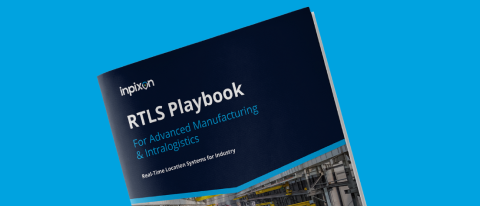In modern manufacturing, the perpetual challenge of overstocking and understocking poses significant hurdles to seamless production processes. The perils of overstocking, from bloated inventory to logistical complexities, compared with the pitfalls of understocking, leading to disruptions and quality compromises, demand a revolutionary approach.
Enter Real-Time Location Systems (RTLS) with the transformative promise of "Just-in-Time" (JIT) and "Just-in-Sequence" (JIS) methodologies. By orchestrating a harmonious symphony of precise material deliveries and optimized sequences, RTLS propels manufacturing efficiency to new heights.
This article delves into the strategic fusion of RTLS technology with JIT and JIS principles to not only tackle inventory woes but also enhance productivity, quality, and decision-making within the production domain.
The problem of overstocking and understocking in the production process
Overstocking can occur when more materials, components, or finished products are held in inventory than necessary for immediate production needs. Overstocking can result from several factors. For instance, production variability, such as unexpected changes in customer orders or production disruptions, can lead to overstocking if materials are procured in excess. Longer lead times for material procurement can also contribute to overstocking if materials are ordered well in advance to ensure timely arrivals. Moreover, concerns about supplier reliability can lead companies to keep safety stock on hand, which may contribute to overstocking.
Understocking, on the other hand, happens when there are insufficient materials or components to meet production demands. Understocking can have severe consequences, including production disruptions that result in significant downtime, missed delivery deadlines, and production delays. To address understocking situations, companies may resort to expensive expedited shipping, eroding the cost-saving benefits associated with JIT and JIS. Furthermore, insufficient materials can lead to rushed and potentially compromised assembly processes, affecting product quality and increasing the risk of defects.
How RTLS helps to increase efficiency and reduce costs on the production line through "Just-in-Time" (JIT) or "Just-in-Sequence" (JIS)
Just-in-Time (JIT) is a manufacturing strategy that aims to minimize inventory levels and reduce waste by delivering materials to the production line just-in-time for use. This approach requires precise coordination between suppliers, production processes, and inventory management. RTLS can help to achieve JIT manufacturing by providing real-time information on inventory levels, production progress, and potential bottlenecks.
Just-in-Sequence (JIS) is a further refinement of JIT that ensures that materials are delivered to the production line in the exact order and sequence required for assembly. This approach requires a very precise understanding of the production process and the ability to track and control the movement of materials throughout the line. RTLS can help to achieve JIS manufacturing by providing real-time visibility into the production line and the movement of materials.
Here are some specific examples of how RTLS can be used to improve JIT and JIS manufacturing:
- Track the location of inventory: RTLS can be used to track the location of materials and components throughout the production line, ensuring that they are always available when needed. This can help to reduce the risk of stockouts and production delays.
- Monitor production progress: RTLS can be used to monitor the progress of production, identifying bottlenecks and potential delays before they occur. This can help to optimize the production process and reduce waste.
- Optimize material placement: RTLS can be used to optimize the placement of materials and components on the production line, ensuring that they are always within easy reach of workers. This can improve productivity and reduce downtime.
- Prevent errors and misplacement: RTLS can help to prevent errors and misplacement of materials by providing real-time visibility into the production line. This can help to reduce the risk of defects and rework.
Key Benefits:
- Reduced inventory levels: RTLS can help to reduce inventory levels by ensuring that materials are only delivered when needed. This can save space, reduce storage costs, and improve cash flow.
- Improved production efficiency: RTLS can help to improve production efficiency by reducing delays, minimizing downtime, and optimizing material placement. This can lead to increased output and lower costs.
- Enhanced quality control: RTLS can help to enhance quality control by preventing errors and misplacement of materials. This can lead to fewer defects and rework.
- Improved decision-making: RTLS can provide real-time data on the status of production, which can help manufacturers make informed decisions about their operations. This can lead to better resource allocation, improved scheduling, and more efficient production processes.
For more information about material flow, check out these success stories:
- Faster, More Efficient eCommerce Warehouse Processes
- Smart Material Flow: Dwell Time and Transport Process Optimization
- Improve Material Transport Process Controls
- Intelligent Material Flow & Shopfloor Management
To delve deeper into the transformative potential of RTLS in advanced manufacturing and intralogistics, we invite you to download our comprehensive ebook, "The RTLS Playbook for Advanced Manufacturing & Intralogistics." Equip yourself with the tools and insights needed to propel your business toward operational excellence and sustainable growth in the digital age.
Download the ebook here and pave the way toward a future of optimized manufacturing efficiency and unparalleled success.


-3.png?length=1000&name=Inpixon%20LinkedIn%20Banner%20August%202025%20(2)-3.png)


